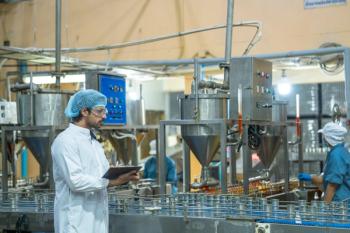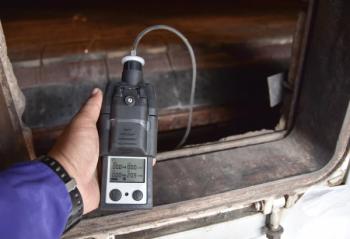
Advancing Biomedical Research with New Infrared and Raman Microscopy Techniques
Significant progress is being made to harness the power of spectroscopy technique for medical research. An ongoing challenge, and area of development, in this effort, is to “see” more and more detail about biological activity, even within individual cells. Ji-Xin Cheng, a professor of biomedical engineering at Boston University, is advancing such work, by developing techniques like midinfrared photothermal (MIP) imaging and Raman spectromicroscopy. Cheng is the 2019 winner of the Ellis R. Lippincott Award, which is awarded annually by the Optical Society, the Coblentz Society, and the Society for Applied Spectroscopy, to an individual who has made significant contributions to the field of vibrational spectroscopy. Here, Cheng speaks to us about those techniques.
Significant progress is being made to harness the power of spectroscopy techniques for medical research. An ongoing challenge, and area of development, in this effort, is to “see” more and more detail about biological activity, even within individual cells. Ji-Xin Cheng, a professor of biomedical engineering at Boston University, is advancing such work by developing techniques like midinfrared photothermal (MIP) imaging and Raman spectromicroscopy. Cheng is the 2019 winner of the Ellis R. Lippincott Award, which is awarded annually by the Optical Society, the Coblentz Society, and the Society for Applied Spectroscopy, to an individual who has made significant contributions to the field of vibrational spectroscopy. Here, Cheng speaks to us about those techniques.
Fourier transform–infrared (FT-IR) imaging has not been a sufficient technique for imaging living cells and organisms due to four main problems you have described: sample heterogeneity and scattering, low spatial resolution, lack of depth-resolving power, and strong water absorption. You have addressed these problems using an imaging platform based on photothermal detection of mid-infrared absorption, called midinfrared photothermal (MIP) imaging (2). Can you briefly explain to our readers how MIP imaging works?
Our MIP microscope comprises an IR beam and a visible beam, a reflective objective, and a typical microscope frame (Figure 1). MIP imaging can be done in either transmission mode for transparent samples, or in a backward detected (epi-) mode for non-transparent samples (Figure 1 inset). The spectra can be acquired by sweeping the IR laser wavelengths. A spatially resolved chemical map can be acquired by scanning the sample.
Figure 1. The principle of mid-infrared photothermal (MIP) microscopy by either forward- and epi-detection. The propagation of the visible beam (probe) is perturbed by the thermal lens effect induced by the absorption of the pulsed mid-IR (pump) beam. Image contrasts are created by detecting the probe beam intensity change. Inset: modification for a backward detected (epi-) scheme. PD = photodiode. RA = resonant amplifier. DM = dichroic mirror. MCT = mercury cadmium telluride. OAPM = off-axis parabolic mirror. Adapted from reference (1) with permission.
The relatively small cross section of infrared absorption and the relatively large focal volume of an infrared beam make it difficult to efficiently detect the thermal lensing effect. Would you describe the concept of thermal lensing and how this allows you to exceed the theoretical limits for spatial resolution using infrared spectroscopy?
Good question. Though the focal volume of an infrared beam is large, the thermal lensing only occurs at the absorber and is detectable by the visible probe beam. This allows the spatial resolution of a MIP microscope to reach the diffraction limit of the visible probe, which is 10 times better than a FT-IR microscope.
Why is MIP imaging a good technique for imaging living cells and organisms as compared to, for example, other techniques such as two-photon microscopy or fluorescent probes?
Excellent question. Compared to fluorescence microscopy, MIP can see the chemical content of a cell in a label-free manner. This is particularly useful for mapping small molecules such as lipids and drug molecules. Compared to the strong Raman scattering from C-H vibrations, IR signals are strong in the fingerprint region. Thus, MIP is particularly suitable for “fingerprinting” living cells.
What were you able to achieve with MIP imaging in terms of sensitivity and spatial resolution? How do these results compare to classical infrared or Raman microscopy?
As mentioned above, the resolution of MIP imaging is 10 times better than conventional IR microscopy. MIP is able to probe nanoparticles, which is beyond the reach of FT-IR microscopy. MIP imaging and Raman spectroscopy are complementary. MIP offers high speed at a certain band while Raman gives the whole spectrum at a certain pixel. We recently combined these two modalities, termed IRaman, manuscript under review now.
What do you think are the limits of this technique in terms of spatial resolution?
The MIP resolution can be further improved through structured illumination. We expect a resolution of 100 nm in the near future.
What are your next steps to advance this work?
We just demonstrated a wide-field version, which is in press by Science Advances (ref 3). For the next, we plan to push the detection sensitivity to single virus particle or single molecule level.
You have applied the technique of Raman spectromicroscopy to the analysis of lipid droplets in human prostate cancer (2). How is Raman spectromicroscopy different from other Raman microspectroscopy techniques?
In this method, we integrate single-color stimulated Raman scattering (SRS) imaging and Raman microspectroscopy. With single-color SRS, we can locate the subject of interest. We then use Raman microspectroscopy to fingerprint the subject.
What advantages does it offer for this type of study? What were you able to see in this study using this technique that you would not have been able to see otherwise?
It allows us to produce a fingerprint Raman spectrum from a single lipid droplet in prostate cancer cells (2). This method allowed us to discover cholesterol ester as a metabolic marker of aggressive prostate cancer.
What do you anticipate will be your next major area of research or application?
My group is dedicated to pushing the boundaries of chemical microscopy in both technical innovations and biomedical applications. Our long-term goal is to develop chemical nanoscopy to closely watch how molecules play their “orchestra” in life.
References
- D. Zhang, C. Li, C. Zhang, M.N. Slipchenko, G. Eakins, J-X. Cheng, Sci. Adv. e1600521 (2016).
- S. Yue, J. Li, S-Y. Le, H. J. Lee, T. Shao, B. Song, L. Cheng, T.A. Masterso, X. Liu, T.L. Ratliff, and J-X. Cheng, Cell Metabolism19, 393–406 (2014).
- Yeran Bai, Delong Zhang, Yimin Huang, Lu Lan, Kerry Maize, Ali Shakouri, Ji-Xin Cheng, Ultrafast Chemical Imaging by Widefield Photothermal Sensing of Infrared Absorption, Sci. Advances, 2019, in press.
Newsletter
Get essential updates on the latest spectroscopy technologies, regulatory standards, and best practices—subscribe today to Spectroscopy.





